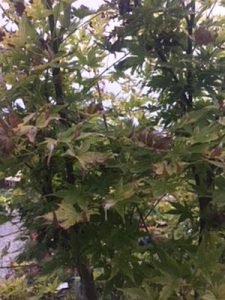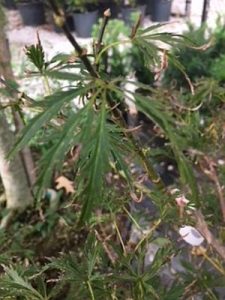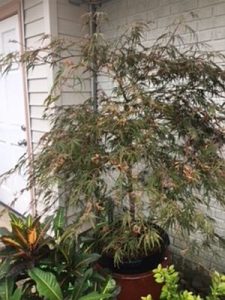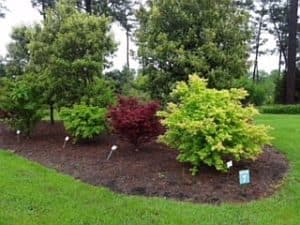
Japanese Maple, Acer Palmatum
Native to Japan and Korea, Acer palmatum or Japanese maple has been a part of Japanese history for centuries reportedly as far back to the 7th century. Many of the finest cultivars were first known by their Japanese names. We love them for their form, interesting leaf shapes and wonderful Fall colors. They do well in large containers on patios and courtyards and as specimen plants.
We thought that Japanese maples were not particularly well-adapted to the Deep South, but according to Dr. Allen Owings, they grow here as long as they are provided the proper growing conditions. Japanese maples grow best in zones 5-9a. Our warm temperatures can cause a lack in the dormancy pattern. Strong sunlight, dry winds, or salty, alkaline soil can make growing difficult. Plant on the north and east sides of the house to shade from the scorching afternoon sun. Soil should be slightly acidic, well drained but maintain some moisture. Too much moisture may cause root rot, cover with 3-4 inches of pine mulch and avoid covering the trunk. Japanese maples have shallow roots. Winter is a great time to add new Japanese maples to your landscape.
It may be necessary to grow in containers that can be moved out of intense sunshine. Often, people make the mistake of seeing sun burnt leaves and assuming the plant needs more water. If your plant is drying out, you will notice dry leaves evenly spread throughout the plant. When too much sun is the problem, the dry leaves will only be clustered in certain areas. If leaves are severely sunburned, you may need to de-leaf the plant competely, but not too late in the summer. Red-foliage varieties are most susceptible to sun scald on foliage during summer and early fall. Green varieties seem to be less susceptible to leaf scorch. Light pruning can be done in winter for shaping during the first 5 years of growth.
A little more sun than shade will result in enhanced leaf color. Variations in leaf color and shape are a unique horticultural characteristic of Japanese maples. There are green-foliaged and red-foliaged varieties. Most of the green-foliage varieties have reddish or yellow fall foliage color. The finer textured-foliage species are called threadleaf forms.
Japanese Maples at Hammond Research Center
Bloodgood, Fireglow, Crimson Queen and Burgundy Lace are some popular ones at garden centers in Louisiana. A few other cultivars, Coral Bark, Butterflies, Kagiri Nishiki, Moonfire and Seiryu.
Submitted by Karen Blackburn





